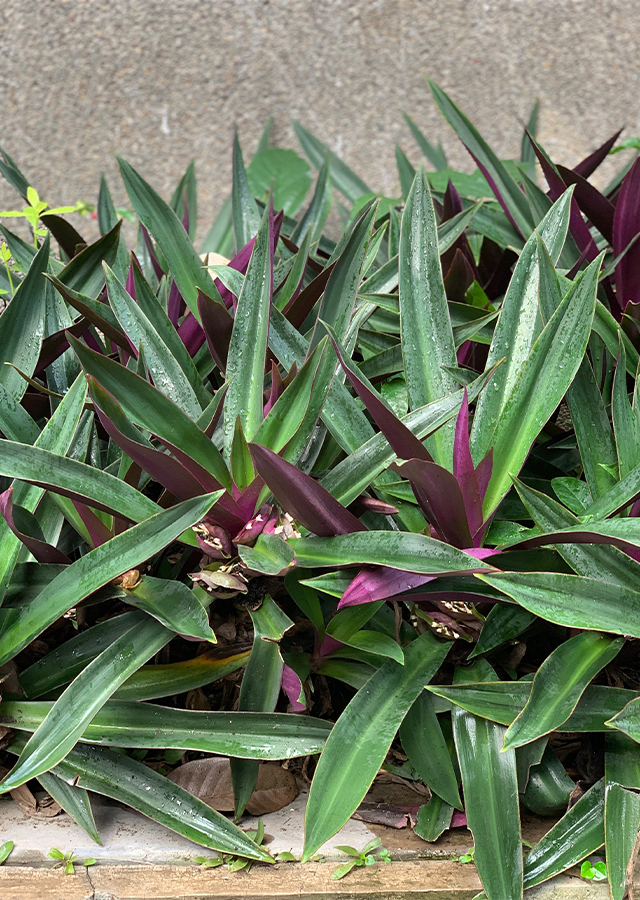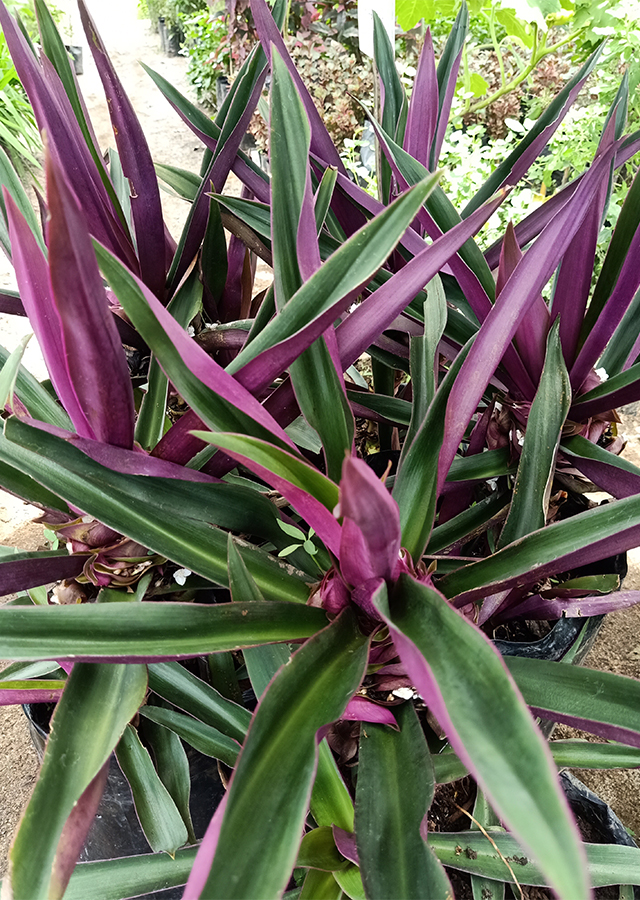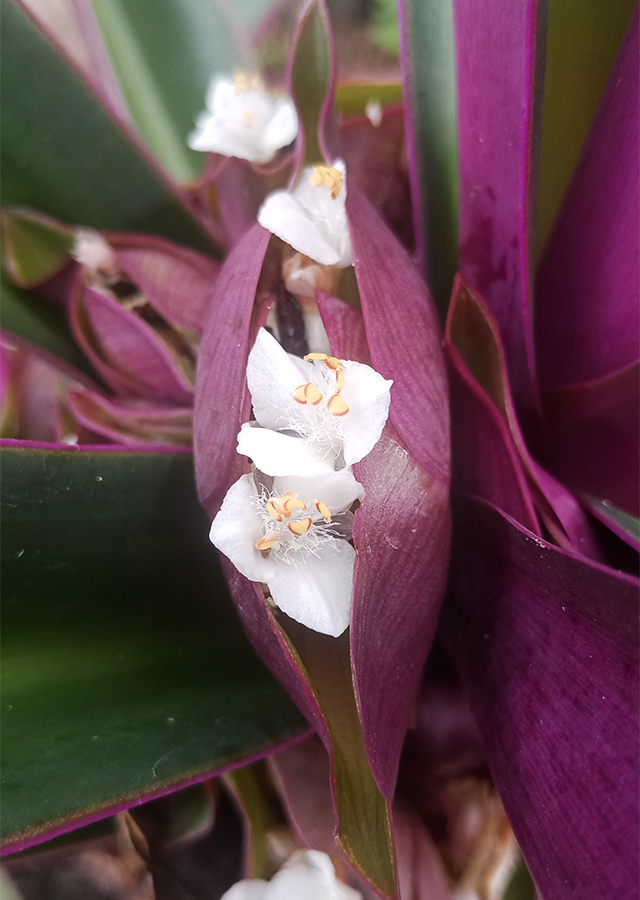Oyster Plant
Tradescantia spathacea Sw.
Commelinaceae
Location in our garden
Principal



Synonym
Ephemerum bicolor Moench
Rhoeo discolor (L'Hér.) Hance
Tradescantia discolor L'Hér.
Habitus
Shrubs. A stout perennial herbaceous, somewhat fleshy plant, 0.5 m in height or less
Part Used
Flowers
Growing Requirements
Full Sunshine
Habitat
Forest
Coastal
Shrublands
Overview
Oyster plant is a clump-forming evergreen native to Southern Mexico, Belize and Guatemala. It is commercially grown for bedding, rock gardens, and tropical effects, but classified in the Global Compendium of Weeds as an invasive species and an environmental weed. It is commonly grown in the West Indies. The leaves and flowers reportedly used in making tea.
Vernacular Names
Zi bei wan nian qing (Chinese), Cordoban (Cuban). Zopitolera (Mexican). Sanguinaria (Puerto Rican). Moïse dans les jonc (French), Di San Pedro (Spanish), Cay le ban (Vietnamese), Bangka-bangkaan (Tagalog-Philippines).
Agroecology
Best in filtered or part sun locations. Will grow in direct sun with some afternoon protection. Also grows in shade, but the foliage may not have as bright of colours and it may get leggy. Plants like a consistently moist but well-drained soil. Plants also can grow well on rocky soils. Established plants have drought tolerance.
Morphology
- Stems - Stems are short, stout, simple, and succulent.succulent, thick and unbranched.
- Leaves - alternate, radially arranged in a crowded apical rosette; simple, flat, linear-lanceolate, acute leaves, base sessile with a closed sheath and entire margin; green or variegated green and cream above, purple beneath, rough and stiff texture, 18-36 cm x 2,5-5 cm.
- Flowers - Inflorescence consists of axillary, boat-shaped, waxy pair of purple bracts with several flowers inside the 'boat', scarcely exerted, ca 2,5-5 cm; peduncles are 2,5-5 inches. Flowers are white, <2,5 cm with 3 equal petals.
- Fruits - 3-celled capsules.
Cultivation
Propagated by seeds, stem cuttings or division.
Chemical Constituents
P-coumaroyl-delphinidin 3,5-diglucoside, flavonoids, antocyanin, saponins, carotenoid, terpenoids, coumarinic and steroids.
Traditional Medicinal Uses
Medicinal Uses
- The plant is decongestant, expectorant, blood refrigerant, and antidysenteric.
- Reported anti-inflammatory, anticancer, insecticidal, antimicrobial, antifertility properties.
- Studies have suggest antioxidant, antibacterial, antimutagenic, antigenotoxic, antitumor properties.
Traditional Uses
- In Puerto Rico, decoction of leaves is used in the treatment of psoriasis.
- In Mexican traditional medicine, leaves used for the treatment of "nervios."
- It is used for the treatment of superficial mycosesease, and dysentery in Peru.
- In Singapore, sold in markets as both ornamental and medicinal: Boiled in water, it is believed to have cooling properties.
- In Thai medicine, it is used for fever, cough and bronchitis.
- In Cuba, frictions and cataplasms are used to treat wounds.
- In the Caribbean, poultice of leaves is used for asthma.
- Decoction of dried or fresh leaves used for cough, colds, hemoptysis, whooping cough, nose bleed.
Part Used
Reference Sources
- https://plants.ces.ncsu.edu/plants/tradescantia-spathacea/.

